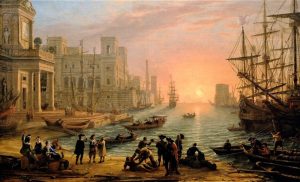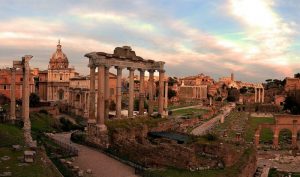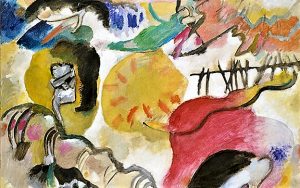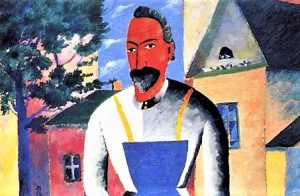Classicism
Classicism starts as a movement that tried to stick as much as possible to the periods of apogee of the art of Ancient Rome and Greece, therefore, it manifested class and decency, it stood out for being a cultural movement that awoke the aesthetic and perfectionist tendencies in the human being, stereotyping in this way the population.
What is classicism?
Classicism is a cultural movement developed during the second half of the eighteenth century that was strongly influenced by the classical cultures of Rome and Greece. This movement expressed the desire to impose sobriety on humanity in order to control not only emotion, but also visceral impulses of people, diminishing everything that referred to human beings to monotony and banal perfectionism.
About classicism
It stood out for always seeking perfection and intellectual and aesthetic harmony, which human beings possess in all areas of art, designing or, better said, redesigning human behavior with its works to modify the reality of society, thus transforming it into a precise, correct, simple and sober perception of the world around us, omitting all eccentricity and everything that goes beyond the social parameters, as can be seen the current does honor to its name being classic.
Origin
In art, classicism is established between Baroque and Romanticism, creating a balanced mixture of both trends. Some historians and experts in the matter usually establish the date of origin around 1750, year in which J.S. Bach dies and concludes in 1827, year in which one of the greatest musicians and composers of history dies, which was Beethoven.
History of classicism
The classicism as current had a very short duration, was embracing fame during the late seventeenth century, it was going through different circumstances of history as the one lived by the West for the time, leaving the nicknamed “Modern Age” to move directly to the “Contemporary Age“.
During these dates there are historical events that would change society, together with it, the history told for that moment would mutate thanks to the classicist movement, as was the French Revolution in 1789.
Characteristics
The characteristics of classicism can be perceived with simple sight, since in all its works the bases of the same “The perfection of the human being” stand out. The ones that stand out the most in the works are:
- The inspiration in models and works of antiquity, based only on the works of the artistic apogee of Rome and Greece, for example the works taken from Homer, Horatio and Theocritus.
- It is totally rationalist and suppresses all imaginative ideas, the physical features of the human being are exalted, emphasizing in this way his way of being and living, being as exact as possible that the artist can shape.
- It seeks to aim simplicity and to maintain clarity in the works, being felt with moderation, establishing a harmonic equilibrium, thus allowing a true order to be seen.
- Classicism always sought to maintain a pedagogical attitude in its works, as it captures important facts of history, famous people, literary works and architectures of past eras.
- It always seeks to maintain a distinctive character of all genres that allows it to stand out for itself and not be associated with other external
- Being as realistic as possible, without imaginative characters does not merit an exhaustive analysis on the part of those who admire the works, but rather moves directly to the moment embodied in the work.
The artistic movement of classicism managed to impact on all social areas for the time, seeking to bring the past to the present that was lived in Europe, covered all areas of art from literature, sculpture, architecture, illustration to music and theater, having a high impact on the latter two.
The illustration
It was in the 18th century when the current of illustration was born in France, which made it a true basis for classicism, where intellectual processes formed a main axis in which we sought to encompass more knowledge in a more methodical way.
In painting
Historical and mythological scenes were captured, with a firm style without exaggerations, in which the center of attention was always in the message to be captured with successive shots, without contrasts or exaggerated scenes or irreverently full of emotion.
In literature
The “Clan of the Ancients” is created which produced a sensation in the French academy during the 17th century, in this there were both ancient and modern poets. Great reference is made to the main French poet Boileau, who was one of the main referents of the clan. Among his most outstanding creations are the satirical based on those of Juvenal and Horacio, which criticizes the taste of certain contemporary exponents and in turn expresses great admiration for Moliere, La Fontaine and Racine.
The sculpture
The harmony of the body was undoubtedly the main theme when sculpting, as it was done in Greece and Rome. Starting from Michelangelo’s works, expression and moods were very marked.
In music
Definitely, music was one of the arts that most converged this movement, the music for this time began to transform into refined and balanced, with simple harmonies and an orderly structure that caused placidity to those who perceived these symphonies, end up suppressing the continuous bass and end up being the tonalities that organize the work. For its part, this was the time of the greatest classical music composers the world has known: Mozart, Beethoven, Cherubini. For its part, the Orchestra evolves and adapts to the classical form, forming a section of strings, wind and percussion. The orchestras are used not only in special events but also in plays. This gives rise to the Buffa’s works that are argued with daily life but with humorous or sentimental notes, thus attracting large audiences.
Representatives of classicism
- Nicolas Poussin.
- Jacques Stella.
- Allan Ramsay.
- Francisco Pradilla.
- Jean-Baptiste Santerre.
- Claudius of Lorraine.
- Beethoven.
- Mozart.
Works
Below, we highlight some of the most important works of classicism:
- Sunset in a port, Claudio de Lorena.
- The Empire of Flora, Nicolas Poussin.
- Christ Served, Jacques Stella.
- Landscape with Aeneas at Delos, Claudio de Lorena.
- Echo and Narcissus, Nicolas Poussin.
- Jason with the golden fleece, Bertel Thorvaldsen.
- Sleeping Venus and Cupid, Nicolas Poussin.
- Ideal landscape, Gaspard Dughet.
Importance
Classicism drove many artists, more than anything else in music, these artists are now strongly admired for the quality of their works, used not only in orchestras, but also to demonstrate that classical music has an effect on the mind, has been implemented for stress reduction treatments among others.
Added to this, the sophisticated and perfectionist art that triggered this movement still continues to inspire new artists who wish to integrate into the orb, therefore, like all other cultural movements that impact society in such a rapturous way, it is important for the value it added to humanity.
How to cite this article?
Briceño V., Gabriela. (2019). Classicism. Recovered on 23 February, 2024, de Euston96: https://www.euston96.com/en/classicism/










